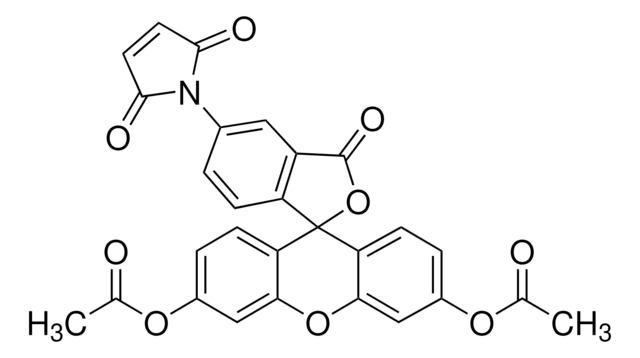This application will need to be validated by the end user. This product is passively taken up by cells. Fluorescence occurs when the dye is hydrolyzed by esterases within the cell. The dye reacts covalently with amine groups present on intercellular proteins, which allows for long-term staining effects. This dye may be taken up by the parasite, as well.
The link below may offer additional helpful information:
https://www.sciencedirect.com/topics/biochemistry-genetics-and-molecular-biology/carboxyfluorescein-diacetate-succinimidyl-ester







![6-[Fluorescein-5(6)-carboxamido]hexanoic acid N-hydroxysuccinimide ester suitable for fluorescence, ≥75% (HPLC)](/deepweb/assets/sigmaaldrich/product/structures/387/963/318bf7ad-cf3e-4963-b3df-a9631e1631ae/640/318bf7ad-cf3e-4963-b3df-a9631e1631ae.png)



![5-([4,6-Dichlorotriazin-2-yl]amino)fluorescein hydrochloride ≥90% (HPLC)](/deepweb/assets/sigmaaldrich/product/structures/271/656/5f185b68-9254-440f-8211-1f4fbe1fee16/640/5f185b68-9254-440f-8211-1f4fbe1fee16.png)

